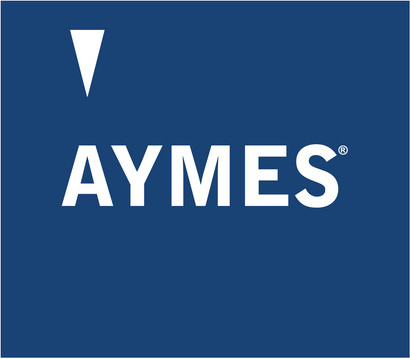Cows Milk Protein Allergy Background:
Cows milk protein allergy (CMPA) is the most common food allergy in infants with approximately 2-3% of children being affected(1).
CMPA is often over diagnosed, therefore being able to identify symptoms and confirm diagnosis is essential in preventing over diagnosis and exclusions of key nutrients(2).
Types of Cows Milk Protein Allergy:
CMPA can be either IgE or non-IgE, with different immunological pathways involved. In IgE allergies antibodies are formed against the allergen and upon exposure to the allergen will release chemicals such as histamine resulting in an immediate reaction. Non-IgE mediated food allergies are caused by a reaction involving other components of the immune system apart from IgE antibodies and is less well understood. Presentation and management differs for IgE and non-IgE and as such correct diagnosis is essential in order to treat patients.
Additionally, food protein-induced enterocolitis syndrome (FPIES)is a rare severe form of non-IgE allergy resulting in repeated vomiting and GI symptoms such as diarrhoea 1-6 hours after ingesting the food(3).
The below table highlights the main presentation of milk allergy and how each type of allergy is diagnosed and treated(4).
|
|
|
|
|
|
|
|
|
|
-Clinical history
-Skin prick testing
-SIgE bloods
|
-Clinical history
-Dairy exclusion for 2-4 weeks followed by reintroduction
|
|
Typical Onset (post ingestion)
|
|
|
|
|
|
-Vomiting
-Diarrhoea
-Abdominal pain/colic
|
- Persistent Irritability
-‘Colic’
-Vomiting
-‘Reflux’
- GORD
- Food refusal or aversion
-Diarrhoea
- Constipation
- Blood and/or
- Mucus in stools in otherwise well infant
|
- Perfuse diarrhoea
- Perfuse Vomiting
|
|
|
-Acute pruritus,
-Erythema
-Urticaria,
- Angioedema
-Acute‘flaring’of persisting atopic dermatitis
|
- Pruritus
- Erythema
- Non-specific rashes
- Dermatitis
|
|
|
|
|
|
|
|
|
- Anaphylaxsis
- Acute rhinitis - Conjunctivitis
|
|
|
|
|
- Antihistamine
- Adrenaline
- Dairy exclusion
|
|
- Dairy exclusion
- Fluid resuscitation
|
Diagnosis
To confirm diagnosis in IgE allergy, an allergy focussed history is essential. This should include asking about previous exposures to milk and resulting reactions, reproducibility of reactions, atopic family history, eczema and diet history(5). In addition to a clinical history, skin prick testing or serum IgE levels for milk should also be taken in IgE allergy and interpreted by an expert clinician within the field.
In Non-IgE allergy diagnosis is more complex. Along with an allergy focused history, complete elimination of dairy should be trialled for a period of 4-6 weeks(4) and reintroduced to review the impact on symptoms. If symptoms improve on dairy exclusion and exacerbate on dairy reintroduction, dairy should continue to be excluded from the diet.
In FPIES, a clinical history is a significant componentin identifying symptom presentation and timing of symptoms. If symptoms are repeatable on dairy exposure dairy should be completely avoided in the patient’s diet.
Advice and Treatment
Breastfeeding:
Breastfeeding mothers do not need to avoid dairy in their own diet unless reactions are noted through maternal ingestion of dairy. If maternal dairy exclusion is advised a suitable formula should be prescribed, in most cases an extensively hydrolysed formula is appropriate. Care should be taken to encourage Mothers who are able to, to continue to breastfeed(4).
Under 1’s:
For infants being mixed fed or formula fed with milk allergy, an extensively hydrolysed formula should be offered in most cases.If extensively hydrolysed formula does not lead to symptom resolution and amino acid formula would be needed(4).
In some cases an amino acid formula should be used as first line as treatment for milk allergy. Circumstances where an amino acid formula may be appropriate first line include:
-Anaphylaxis
-Faltering growth
-Multiple allergies
Over 1’s:
Children over 1 can use over the counter dairy substitutes to replace milk.
As dairy in young children’s diets plays a vital role in growth and has been shown to impact on growth it is important to consider all the key nutrients this provides when considering suitable alternatives(6).
Key nutrients provided by dairy include protein, fat, energy, iodine, B12 and B2.
The below table highlights alternative dairy products.
|
|
Cost (£)per unit and 1l/1kg
|
|
|
|
|
|
|
|
|
|
|
|
|
|
|
|
Oatly Whole Oat Drink (1L)
|
|
|
|
|
|
|
|
Alpro Creamy Oat Longlife (1L)
|
|
|
|
|
|
|
|
|
|
|
|
|
|
|
|
|
Alpro Soy Growing up milk (1L)
|
|
|
|
|
|
|
|
Plant Chef Mature Cheese (200g)
|
|
|
|
|
|
|
|
Wicked Kitchen Black Pepper block cheese (150g)
|
|
|
|
|
|
|
|
Violife Original Sliced Cheese (200g)
|
|
|
|
|
|
|
|
Applewood Smokey Wood Cheese (200g)
|
|
|
|
|
|
|
|
Cathedral City Dairy Free (280g)
|
|
|
|
|
|
|
|
Koko Dairy Free Yogurt (500g)
|
|
|
|
|
|
|
|
Alpro Natural Yogurt (500g)
|
|
|
|
|
|
|
|
Oatly Greek Style Oatgurt (400g)
|
|
|
|
|
|
|
|
Coconut Collab Yogurt (600g)
|
|
|
|
|
|
|
|
Reintroductions:
Infants with non-IgE milk allergy should consider reintroduction to milk via the milk ladder 6 months after complete dairy exclusion or from 9 months of age(4).
For IgE allergy, testing should be repeated by an allergist and further steps determined subsequent to the results.
FPIES reintroductions should be considered via a hospital challenge at 3 years of age and infants should be under the care of an allergist.
Summary:
Milk allergy is one of the most common allergies in the UK(7). The presentation of the allergy can vary depending on if it is IgE, non-IgE or FPIES (a type of non-IgE allergy).
Milk is a key source of nutrient for infants and toddlers and it is essential to consider alternative food sources to ensure that dairy elimination does not impact on nutritional status.
Dairy reintroduction depends on the type of allergy with non-IgE milk allergy being managed in primary care. Milk ladders are appropriate in non-IgE allergy however IgE milk allergy and FPIES should be managed within hospital settings within an allergy service.
References
1.Lifschitz C, Szajewska H. Cow's milk allergy: evidence-based diagnosis and management for the practitioner. Eur J Pediatr. 2015;174(2):141-50.
2.Vincent R, MacNeill SJ, Marrs T, Craven J, Logan K, Flohr C, et al. Frequency of guideline-defined cow's milk allergy symptoms in infants: Secondary analysis of EAT trial data. Clin Exp Allergy. 2022;52(1):82-93.
3.UK A. FPIES 2021 [cited 2023 16/07/23]. Available from:https://www.allergyuk.org/resources/fpies-food-protein-induced-enterocolitis-syndrome/.
4.Fox A, Brown T, Walsh J, Venter C, Meyer R, Nowak-Wegrzyn A, et al. An update to the Milk Allergy in Primary Care guideline. Clin Transl Allergy. 2019;9:40.
5.Excellence NIfHaC. Food allergy in under 19s: assessment and diagnosis 2011 [cited 2023 15/07/2023]. Available from:https://www.nice.org.uk/guidance/cg116.
6.Meyer R. Nutritional disorders resulting from food allergy in children. Pediatr Allergy Immunol. 2018;29(7):689-704.
7.Koletzko S, Niggemann B, Arato A, Dias JA, Heuschkel R, Husby S, et al. Diagnostic approach and management of cow's-milk protein allergy in infants and children: ESPGHAN GI Committee practical guidelines. J Pediatr Gastroenterol Nutr. 2012;55(2):221-9.
Bio:
MisbahPrimett is a specialist paediatric allergy dietitian currently undertaking an MSc in Allergy. She has been working in paediatric allergy since 2014. Alongside working at a tertiary allergy centre in the NHS, she is also the founder of Little People Dietitian, a private dietetic business where she sees young children with multiple allergies and restrictive diets. She is also a committee member of the BDA Food Allergy Specialist Group.




